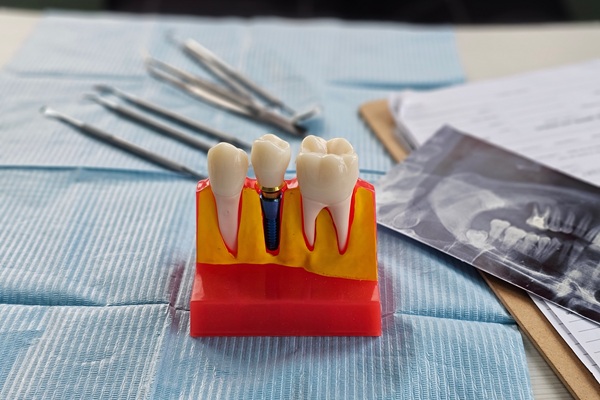How Dental Crowns Are Used as a Dental Restoration

Dental crowns are one of the versatile restorations used in dentistry. Crowns are used to save damaged teeth that cannot be saved using less invasive procedures. Damage can occur to teeth at any time, leaving them severely compromised.
Placing a crown on a tooth requires making permanent alterations by removing enamel to create a better fit. The removed enamel cannot be restored in the future. The tooth will forever need a restoration to serve as its artificial enamel.
Restoring damaged teeth with dental crowns
Dental crowns can fix various types of tooth injuries like decay, fractures, breaks, and chips. They can also be used to address aesthetic issues like discoloration and deformities. Crowns restore the shape, size, and function of damaged teeth. They are designed to fully encase the damaged tooth, hold it together, protect it against irritants in the mouth, and protect it against bite forces.
Some of the more popular uses of dental crowns include:
- Placed on implants to replace missing teeth
- To restore worn-down teeth
- To close abnormal spaces between teeth
- To cover up stains, discoloration, and deformities on teeth
- To protect teeth after root canal therapy
- To restore broken teeth
- As anchors for dental bridges
- To protect severely decayed teeth
- To shield fractured teeth from irritants in the mouth
The dental crown process
Getting a crown placed on a tooth often requires two trips to the dentist's office. The first visit involves evaluating the patient to determine whether a crown is the correct approach and preparing the tooth for a crown.
Once the patient has been cleared for a crown, the dentist starts the process by administering a local anesthetic to anesthetize the tooth being treated. Portions of enamel are moved from all sides to prepare the tooth for the crown. The patient is asked to bite a mold for an impression of the prepared tooth.
The impression is sent to technicians in a lab who make crowns from impressions. It typically takes about two weeks for the personalized restoration to get back to the dentist. A temporary crown is placed on the patient’s tooth to protect it while they wait.
The patient comes back for another appointment in about two weeks. The temporary crown comes off, and the customized crown is placed on the tooth. Alterations are made as needed before permanently cementing the restoration into place.
Getting the most out of your crown
Dental crowns can last over 20 years when properly maintained. Simple things patients can do to get the most out of their crowns include:
- Brush twice daily, floss once per day
- Avoid hard foods that can damage the restoration
- Visit a dentist two times a year for check-ups
- Use protective gear like mouthguards when engaged in physical activities
Restore your damaged tooth
A dental crown can provide a permanent solution for an injured tooth. Contact our dental office today to set up an appointment.
Request an appointment here: https://www.kermandentalgroup.com or call Kerman Dental Group at (559) 424-1177 for an appointment in our Kerman office.
Check out what others are saying about our dental services on Yelp: Dental Crowns in Kerman, CA.
Recent Posts
Dental bridges are oral prosthetics designed to bridge the gap left behind by a missing tooth. Their primary aim is to restore the appearance and function of a smile. Partnering with a general dentist can help you reap the benefits of these prosthetics in two appointments.Dental bridges consist of one or more prosthetic teeth, known…
Finding out that you need a root canal can be nerve-racking. Caring for the treated tooth can be even more stressful. Knowing what to do after the treatment can help you prepare well for it. Here are some tips for a smooth and quick recovery after your root canal.The patient must wait to eat as…
Both general dentists and family dentists are responsible for the oral health care of patients of all ages. They provide a wide range of services, ranging from preventive measures to light cosmetic ones. Wondering whether it is best to see a general dentist or a family dentist? For the most part, they are quite similar! Keep…
Using tools and equipment, your dentist can provide dental cleaning to your teeth and gums in ways that most people cannot do at home. Most of the time, cleaning your teeth properly involves removing plaque and tartar build-up on the surfaces of your teeth, both above and below the gum line. This can make your…


